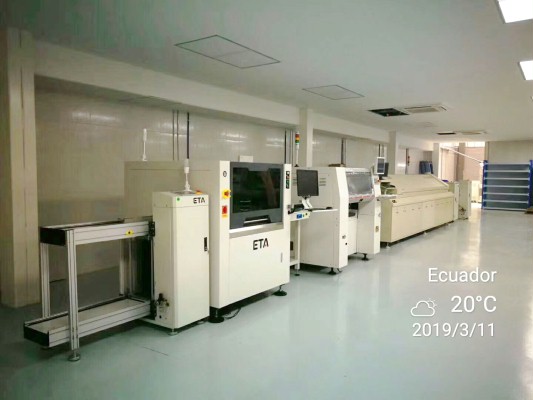SMT Process Status and Future Development Trends
From: Author:SMT Process, Reflow Oven Publish time:2019-05-28 14:56 Clicks:330
SMT Process Status and Future Development Trends

SMT processing is the most important process technology and process in PCBA processing. SMT technology is widely used in the electronics industry. Nowadays, it has replaced traditional electronic assembly technology in many fields and is considered a revolution in electronic assembly technology. Change.
1, Component placement process
The mounting components in PCBA processing are mainly for the assembly of components to be properly mounted to the PCB. When printing, the placement components are different in form and position, so be sure to program the code when it is accurately mounted on the PCB. Whether the PCB position is installed accurately depends on whether there is an error in the process of the packaging component. If the staff does not check the position, the printed board is easily discarded and cannot be used in production printing.
When writing the components, the program should be written according to the simpler structure. Then, the components of the more complicated structure chip type should be written. Only when the error is confirmed again, the production of the patch can be started. In the next production work, the process is automated. After the placement is completed, it is necessary to adjust the position and judge the direction, and take effective measures to do laser recognition and camera recognition.
SMT printing refers to the solder paste printed on the PCB pads, including contact stencil stencil printing and screen printing without direct contact. Usually SMT technology is a contact type, so we are accustomed to refer to it as screen printing.
The first step in screen printing is to stir the solder paste, and the viscosity and uniformity of the solder paste must be taken into account during the stirring process. Viscosity quality has a direct impact on the quality of the printing. Generally, the printing viscosity is determined according to the printing standard. If the viscosity is too high or too low, the printing quality will be affected. The storage environment of the solder paste requires the temperature to be maintained at 0-5 ° C. Under this environment, the components in the solder paste are naturally separated. For this reason, the solder paste should be taken out and placed at room temperature for 20 minutes during use, so that it is naturally heated, and then stirred by a glass rod, the stirring time is 10-20 min; at the same time, the use of the solder paste has environmental requirements, and the ideal environment The temperature is required to be maintained at 20-25 ° C and the humidity is maintained between 40% and 60%.
The solder paste on the PCB pad is the front end of SMT technology production, and is ready for soldering of components. During the printing process, the blade pressure will be pushed under the push to distribute the solder paste on the pad, and the thickness of the resulting stencil should be controlled below 0.15 mm. The practical results show that the silk screen solder paste can not only improve the soldering quality, but also make the solder paste on the PCB pad more full.
3, Reflow soldering process
Before putting the printed board into the reflow soldering, we need to check all aspects of the orientation and position of the components. Take care to control the temperature during reflow soldering. Welding usually requires four steps of preheating, holding, refluxing and cooling. The purpose of preheating is to ensure that the temperature is balanced and stable; the temperature of the holding chamber should be ensured at 180 ° C, the temperature difference should not be too large; the moisture content should ensure that 40% -60% of the conditions are most suitable. When heating, note that the heater temperature is usually set to 245 ° C, and the melting point of the solder paste is 183 ° C. After the reflow oven is transferred, the temperature of the PCB board is gradually cooled to achieve the best results.
By the way, we provide reflow oven, reflow soldering oven, reflow soldering machine, pcb reflow oven, pcb sodlering machine, ir reflow oven, uv oven, nitrogen reflow oven for smt factory.
4, Development prospects and trends of SMT technology
At present, the competition among various industries in the world is becoming more and more fierce, and the cost pressure is relatively large. The SMT industry technology has already demonstrated its system integration in fully automatic intelligent, assembly, logistics and other functions. With the advancement of science and technology, the degree of automation of SMT technology has become higher and higher, labor costs have been greatly reduced, and personal output has increased a lot. The main theme of SMT technology development in the future will be to develop high performance, flexibility, ease of use and environmental protection.
❙ SMT process video

